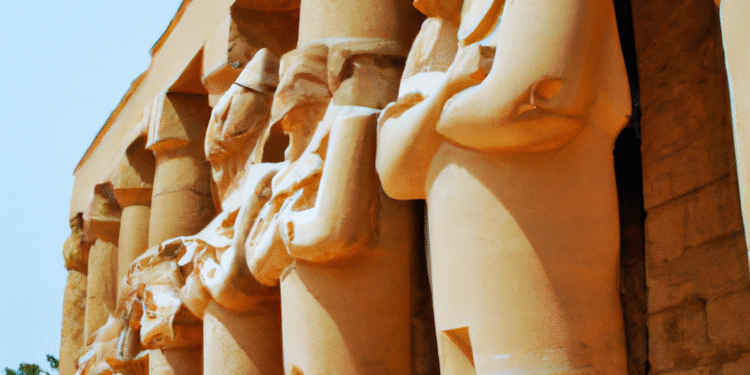Unveiling the Mysteries: A Journey Through Egypt’s Fascinating History
Meta Title: A Comprehensive Exploration of Egypt's History | 10 Key Points of Egypt's Past
Meta Description: Dive into the rich and captivating history of Egypt with our listicle blog post detailing ten essential periods, events, and figures that have shaped this ancient civilization.
1. The Early Dynastic Period
Egypt's history kicks off with the Early Dynastic Period (3100–2686 BC) when the Upper and Lower Egypt were unified under a single ruler. It marked the beginning of Pharaonic rule, which left a lasting impression on Egypt's political, cultural, and architectural landscape. Notable Pharaohs such as Narmer and Djoser reigned during this period, overseeing major developments in art, hieroglyphic script, and monumental architecture, including the Step Pyramid of Djoser, the world's first colossal stone building.
2. The Great Pyramids of Giza
Built during the Old Kingdom (2686–2181 BC), the Great Pyramids of Giza are marvels of engineering and architecture. The largest, the Great Pyramid of Khufu, is one of the Seven Wonders of the Ancient World and the only one still standing. These pyramids, designed for the burial of Pharaohs, reflect the elaborate religious beliefs and power dynamic of ancient Egypt during this time.
3. The Middle Kingdom
The Middle Kingdom (2055–1650 BC) was defined by a renaissance in Egyptian culture. This period saw the creation of some of the most beloved works of Egyptian literature, such as "The Tale of Sinuhe." Architectural advancements led to the building of major projects like the irrigation system at the Faiyum Oasis, illustrating the society's growing complexity.
4. The New Kingdom & The Age of Empire
The New Kingdom (1550–1069 BC) often referred to as the Age of Empire, was the zenith of Egyptian power, prestige, and territorial extent. This period was marked by strikingly powerful Pharaohs like Hatshepsut, Akhenaten, Tutankhamun, and Ramses II, whose actions changed the course of history.
5. Amarna Period and Religious Revolution
The reign of Akhenaten, known as the Amarna Period (1353–1336 BC), was a time of profound religious revolution. Akhenaten replaced Egypt's traditional pantheon with worship of a single god, the Aten, causing a seismic shift in the religious and political landscape. Although his changes were largely reversed after his death, his impact on Egypt's religious history remains significant.
6. The Mystery of Tutankhamun
Boy-king Tutankhamun, who reigned during the New Kingdom, is one of the most famous Pharaohs. Although his reign was relatively uneventful, the discovery of his nearly intact tomb in 1922 by Howard Carter created a worldwide sensation, offering valuable insights into the royal funerary practices and beliefs of ancient Egypt.
7. The Ptolemaic Kingdom
After the death of Alexander the Great, one of his generals, Ptolemy, established himself as the ruler of Egypt, thus beginning the Ptolemaic Kingdom (305–30 BC). This period was marked by the blending of Greek and Egyptian cultures, as seen in the city of Alexandria, a hub of learning and culture. The last Ptolemaic ruler was the famous Cleopatra VII.
8. Roman and Byzantine Egypt
Following the death of Cleopatra VII, Egypt became a province of the Roman Empire (30 BC–641 AD). During this period, Roman administration brought profound changes to Egypt's economy, culture, and religion, including the spread of Christianity. The Byzantine Period, marked by Christian dominance, was followed by Arab conquest in 641 AD.
9. Islamic Egypt
Arab control ushered in the Islamic Period (641–1517 AD) during which Egypt became a center of the Muslim world. It experienced varied fortunes under the rule of different dynasties like the Abbasids, Fatimids, Ayyubids, and Mamluks. The architectural legacy from this period, such as Cairo's mosques and citadels, is particularly noteworthy.
10. Modern Egypt
The Modern Period of Egypt began with the Ottoman rule (1517–1798 AD), followed by the French and British colonial periods, and leading up to the establishment of the Republic in 1953. This period has been marked by significant social, political, and economic changes that have shaped modern Egypt.




